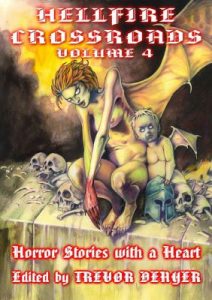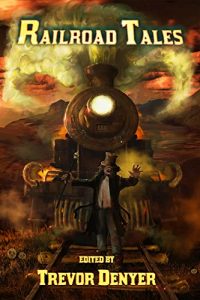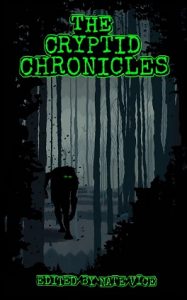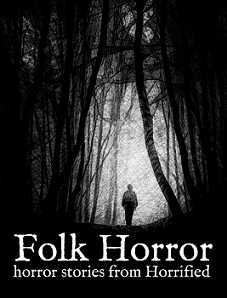
© Midnight Street Press
Jim Mountfield, the pseudonym under which I write horror stories, has just had another work published in an anthology. This comes soon after two other Mountfield short stories were included in the anthologies Nightmare Fuel: Body Horror 2024 (in October) and Monster: Underdog Anthology 2024 (in November). The new story appears in Swan Song: The Final Anthology, just published by Trevor Denyer’s Midnight Street Press. Though I’m pleased about this, the experience is also bittersweet because Swan Song is the final book or magazine to come from Midnight Street Press and marks Trevor’s last work as a publisher, though I’m sure he’ll continue as a writer and poet.
Trevor started publishing in 1998 with Immediate Direction Publications, the original incarnation of Midnight Street Press, and the first thing he produced was the magazine Roadworks. In summer 2001, my story Hound Dog Blues turned up in Issue 12 of Roadworks. It was inspired by a 1995 court-case in my southern-Scottish hometown of Peebles involving a mate of mine, which ended up overturning the United Kingdom’s ‘Dangerous Dogs’ legislation of 1991, in Scotland at least. A judge couldn’t determine whether or not my mate’s dog, a mongrel called ‘Slitz’, qualified as being a dangerous breed, as some had claimed, and declared the legislation not fit for purpose. Anyway, the resulting Hound Dog Blues could best be described as ‘Irvine Welsh meets Stephen King’s Cujo (1981)’.
A year later, when Immediate Directions Publications also put out a fantasy magazine called Legend, I managed to place a story, Her Web, in it too. Her Web was a milestone for me because it was my first-ever fantasy story to get into print. In recent years, I’ve had quite a few fantasy stories published under the pseudonym Rab Foster, so the appearance in Legend set the ball rolling there.


© Midnight Street Press
I’m grateful to Trevor Denyer for publishing those two stories when he did because it gave me a break when my morale really needed it. The early 2000s was a period when, as a writer, I often felt I couldn’t get myself arrested, let alone published. I remember staring almost disbelievingly at his acceptance letters. (At that time, it was still a thing to post physical manuscripts to publishers, making sure you’d included the all-important stamped, self-addressed envelope in which an editor would send a reply saying ‘yay’ or ‘nay’.)
That was also back when my nom de plume wasn’t Jim Mountfield or Rab Foster, but Eoin Henderson. I’m superstitious, and when I was having little luck getting stuff published under that pseudonym, I changed to others. Since then, I’ve had reasonable runs of luck with Jim Mountfield and Rab Foster, so I expect to remain being them for a while longer.
Later, after Immediate Direction Publications had changed into Midnight Street Press, further stories of mine saw print in Trevor’s yearly magazine Hellfire Crossroads and in his anthologies Strange Days (2020) and Railroad Tales (2021). These include two stories that are among my favourites of what I’ve written. The Next Bus appeared in Issue 4 of Hellfire Crossroads in 2014 and was about a tourist who finds himself stuck at a remote bus-stop with a homicidal maniac wanting to make a life-or-death wager on when the titular next bus will arrive. I don’t drive and depend on public transport to get around, so the story expressed my frustration at spending much of my life waiting at bus stops, wondering when the bloody bus is going to come.
I also really liked The Groove, which appeared in the subsequent issue of Hellfire Crossroads, as it wasn’t only about horror but about another topic close to my heart, music. It had a lover and connoisseur of music getting his revenge from beyond the grave on his widow – her musical tastes begin and end with Mariah Carey, Phil Collins, Whitney Houston, Bryan Adams, Robbie Williams and Celine Dion, so you know she’s evil – when she schemes to enrich herself by rewriting his will, getting her hands on his massive record collection and selling it off on eBay. Not only that, but she befouls her husband’s memory by playing Robbie Williams’ Angels (1997) at his funeral.
Earlier this year, Trevor brought out a new magazine called Roads Less Travelled, but that didn’t do as well as expected and led to his decision to close Midnight Street Press as a publishing concern (though not as a retailer – its past publications can still be purchased from its website). Swan Song: The Final Anthology contains the stories he’d planned to publish in future issues of Roads Less Travelled, had the magazine been a success. These stories include a horror / science-fiction number by myself, as Jim Mountfield, entitled The House of Glass, which owes something to the work of H.P. Lovecraft. However, it’s set among the non-Lovecraftian landscapes of Sri Lanka, the country where I lived from 2014 to 2022.
Containing 20 stories of horror, dark fantasy, science fiction and slipstream, Swan Song is available at Amazon UK here and Amazon US here. And to browse Midnight Street Press’s voluminous back catalogue, visit its website here.

© Midnight Street Press





